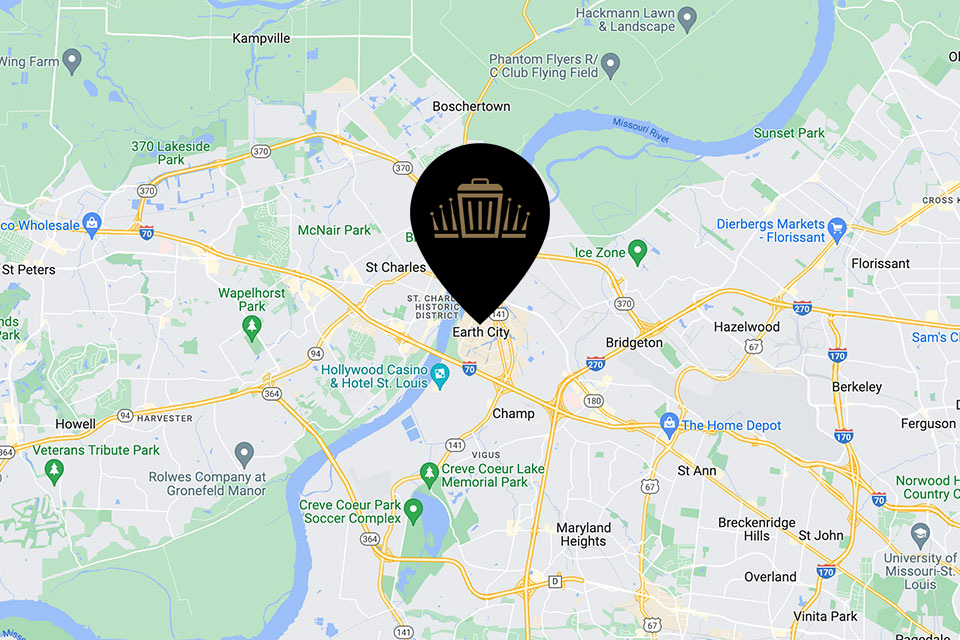Property Management Cleanouts
Real estate / property management cleanouts translate to clearing out a home, flat, or building before new people move in. Cleanouts typically require sorting, removing, and disposing of old furniture, garbage, and junk.This can include light repairs, deep cleaning, and junk recycling. A lot of property managers have crews or services they employ for quick, safe work.
GET A FREE ESTIMATE
What will it cost for us to remove your junk and take it to a disposal site? We would love to provide you with an approximation of the final price. All you have to do is give us some information about the cleanout or demolition project you have in mind. Please fill out the nearby form.
The Cleanout Scope
Property management cleanouts encompass a variety of work, carefully designed around the property’s scale, status and intended purpose. Small homes can usually be cleaned out in a day and large estates may need two or three. The volume and nature of junk, combined with the degree of cleaning required, define the scope.
Junk such as old furniture, broken appliances and construction debris are typically removed, and up to 80% of salvageable materials are donated to local community organizations. Hazardous materials receive special treatment with EPA regulations to keep us all safe.

Debris Removal
Crews start with a quick check to see how much debris there is, then choose the best way to haul it out. Old furniture, appliances, and leftover building scraps often fill up dumpsters fast. Professional junk removal services speed things up, especially when there is a lot to move or the items are heavy.
Hazardous materials such as paint, solvents, or busted electronics require proper disposal. Only trained staff or licensed services should handle these, as disposal regulations can be tight. Most properties have clutter that’s not garbage but simply no longer required.
It’s fairly typical to sort out what can be donated or recycled. Charities can often take up to 80% of useables. Good advance planning and logistics save money and make the process nice and smooth.
Deep Cleaning
Deep cleaning extends beyond mopping floors. We’re talking about scrubbing windows, cleaning carpets, and wiping walls and grime out of kitchens or bathrooms. A meticulous checklist allows crews to leave no corner unchecked, from vents to light fixtures.
We use eco-friendly cleaning products more now, as both property managers and tenants care about health and the environment. Staff are trained on how to use these products and modern tools, increasing outcomes and reducing waste.
It’s the regular deep clean, not just the move-in clean, that keeps spaces sparkling and inviting.
3. Minor Repairs
Checking for little repairs is crucial, particularly prior to a fresh tenant moving in. Taking care of leaky taps, loose door handles, or cracked tiles keeps tenants safe and the property looking great.
A few repairs, like patching holes or tightening railings, do make a difference in staying safe. Every fix is documented, so owners are aware of what’s been addressed. When projects are too large for staff, trusted contractors get drafted to complete the work swiftly.
4. Hazard Abatement
Even worse, lots of properties have concealed hazards such as mold, asbestos, or lead. Identifying and eliminating these is a component of all cleanouts. Local regulations direct how to pack and transport hazardous materials, with the EPA’s regulations being the benchmark.
Trained professionals only. Property managers learn to identify cues, like peeling paint or musty smells, so risks don’t fall through the cracks.
5. Odor Elimination
Pet, smoke, or mold smells can linger. Locate the source initially, whether it is carpet, walls, or vents. Treat pesky odors with specialty sprays, ozone machines, or deep cleaning.
Better airflow helps too. Adding vents or fans can prevent new odors from accumulating. Tenants receive advice on maintaining fresh air, such as opening up rooms or employing natural deodorizers.
Financial Impact
Property management cleanouts impact both short-term cash flow and long-term asset value. Cleanouts impact vacancy rates, rental yields, and maintenance budgets. The cost and benefit analysis below illustrates how variations in decisions around cleanouts impact the financial profile of a property portfolio.
Scenario | Before Cleanout | After Cleanout |
|---|---|---|
Vacancy Rate | 15% | 6% |
Average Rent (per month) | $1,000 | $1,300 |
Cleanout Cost (one-time) | $0 | $1,250 |
Annual Maintenance Cost | $2,200 | $1,600 |
Asset Value | $200,000 | $215,000 |
Tenant Retention Rate | 40% | 68% |
Time to Place Tenant (days) | 45 | 18 |
Faster Turnaround
A simplified cleanout translates to reduced vacancy periods. Once a property is empty, every day’s vacancy is revenue down the drain. Smart scheduling for cleanout crews, particularly if property managers use online systems to book and monitor services, reduces this downtime.
Letting tenants, outgoing and incoming, know clear completion dates communicates expectation and establishes trust. Technology, whether it’s simple mobile apps for task tracking or shared calendars, keeps everyone in the loop.
Higher Rent
Homes that have been deep cleaned can often appear and feel more attractive. Cleaning up and newly cleared spaces command better tenant interest and higher rent. For example, a unit that used to rent for $1,000 might now easily fetch $1,300 post-cleanout, which is a 30% increase.
This enhanced upgrade resonates particularly in cutthroat city markets where staging counts. Owners who pay the typical $1,250 cleanout recoup it in higher rents and shorter vacancies. Putting up before and after pictures during showings can help reinforce the value of these investments.
Lower Vacancy
They help minimize vacancy time. Well maintained properties will attract more applicants and lease faster. In numerous markets, a clean property can reduce vacancy time by half, from 45 to 18 days.
In addition to increasing yearly income, it decreases the chance of property damage that comes with long-term vacancies. Market data indicates that tenant retention increases as much as 60% when properties are maintained, which reduces turnover costs for property managers.
Asset Preservation
Consistent cleanouts extend the life of your building assets. They aid in detecting early signs of wear or damage prior to costly repairs. With a proactive cleanout schedule in place, owners sidestep massive repair invoices down the line.
That’s a few hundred hours in a 3,000 square foot estate which means problems are detected and addressed early. These regular cleanouts, ranging from $500 to $2,000, maintain the long-term value of the property, keeping the asset in prime condition and helping with future sale or renting.
Cleanout Triggers
Cleanouts frequently occur due to transitions in ownership or occupancy. These transformations can stem from tenant turnovers, evictions, remodeling, hoarding, wrecks or court mandates. All come with their own requirements and procedures, from a rental turnover to an unexpected inheritance or flood damage.
Tenant Turnovers
Inspect the property for damage and leftover belongings.
Review the lease or rental agreement for tenant obligations.
Give tenants clear guidelines about what must be removed.
Schedule a final walk-through with the tenant present.
Clean and sanitize all rooms.
Use a checklist to confirm completion of all tasks.
Cleanout Triggers — Tenants moving out need to know what they clean and take out. Early expectations prevent conflicts. All junk and big stuff left behind drag down the turnover. Property managers have detailed checklists to ensure nothing is overlooked and the property is ready for the next occupant.
Eviction Scenarios
Eviction cleanouts get a plan going. Managers should consult with attorneys to comply with local laws, as eviction cleanouts can be fraught with regulations. Once access is restored, evaluate the unit for damage or personal belongings.
Dependable junk removal services assist in getting rid of furniture, rubbish and even hazardous items. Some quick action can prevent inconveniencing new tenants or owners.
Renovation Prep
Before renovations, managers have to clean out rooms of any furnishings and fixtures that would be in the way. Old linoleum, busted refrigerators, and wallpapered-over holes in the drywall usually have to go.
Contractors and managers coordinate to align the cleanout with the schedule for renovation. Everything that comes out should be inventoried and stored, especially if it needs to be returned or recycled. This list helps prevent arguments over lost items.
Hoarding Situations
Hoarding cases require a strategy that emphasizes both safety and compassion. These cleanouts might need therapy for the tenant or owner. Teams use calm, gentle communication to describe the procedure.
You log every item you remove. This cautious approach guarantees that no vital items fall through the cracks and that it honors the occupant.
Post-Disaster Recovery
Cleanouts need to have strict protocols around them after a flood, fire or storm. The first thing the manager does is check how much got damaged.
Insurance and recovery teams need defined lists of what was lost. Training teaches property managers to clean safely and identify hazards. Rapid, deep cleanouts help enable a safer and quicker return to normal.
Strategic Planning
Strategic planning for real estate/property management cleanouts involves establishing clear objectives, enumerating all necessary actions, and decomposing risks preemptively. It starts with a close look at the current state of the property: what works, what needs fixing, and where the challenges lie.
It provides a good way for managers to use time, money, and team effort intelligently and remain flexible in the face of surprises. Good planning maintains the perspective on both what needs to get done right now and the big picture, way down the road.
As local regulations and market trends evolve, the plan should evolve as well so it always matches the actual situation.
Legal Compliance
Understand the garbage collection policies, such as those for hazardous materials and recycling.
Verify tenant rights and notice requirements prior to any cleanout work.
Adhere to building codes for removals, particularly for heavy items or fixtures.
If necessary, secure cleanout permits or licenses.
Document every compliance action, including receipts, reports, and more.
Consult with attorneys in the gray or complicated rule areas.
Adhering to environmental laws such as waste sorting and hazardous materials handling is a must to avoid fines and community backlash. Safety standards, including electrical and structural, require close attention to avoid accidents.
Recording every step guards against future legal claims or disputes and produces both a track record you can display if necessary. Calling in lawyers to review complicated cases ensures you don’t miss anything.
Safety Protocols
Make sure everyone wears gloves, masks, and protective clothing.
Use lockout procedures for electrical and plumbing systems.
Make emergency exits and first aid kits accessible.
Mark all hazardous zones with clear signs.
All employees must receive adequate safety training prior to commencing cleanouts. Periodic safety sweeps identify new hazards, such as weak floors or concealed mold, before they become an issue.
Teams need to be free to inform bosses of anything hazardous or even ambiguous. When it is all on the same page, accidents fall and cleanouts fly.
Vendor Vetting
Criteria | Evaluation Factors |
|---|---|
Licensing | Valid, up-to-date documentation |
Insurance | Comprehensive liability coverage |
Experience | Years in cleanout services |
References | Positive feedback from past clients |
Pricing | Transparent and fair rates |
Research vendors’ histories and read reviews to ensure they’re dependable. Get bids from multiple companies to compare price and what is included.
It’s savvy to maintain a rolodex of approved vendors to call on when new work hits. This streamlines the process and keeps quality high.
Budget Allocation
Make a cleanout budget line so you know what you’re spending and won’t get bit by any surprises. Review expenses from previous cleanouts to identify patterns and establish caps.
Center funds on must-do’s such as toxic waste cleanup before nice-to-have’s. Go ahead and experiment with new vendors or bulk deals, but don’t ever skimp on safety or disposal.
Modern Solutions
Property management cleanouts haven’t been the same for a lot of years. New tools and digital systems now assist managers to work quicker and more intelligently. It’s not merely spring cleaning; it’s about enhancing aesthetics, saving time, and reducing expenses. Great cleanouts sell or rent faster, so less money is lost waiting for the next occupant.
Fresh, open space provides prospective purchasers and tenants a blank slate to draw their lifestyle. For inherited homes or distressed sales, a hard cleanout plan is even more critical.
Management Software
Property management software is today’s cleanout essential. These programs assist in scheduling and tracking each phase, from the initial notification to the closing inspection. Managers are able to configure automatic reminders, perform task assignments, and even send updates to owners or tenants.
This reduces deadline slips and keeps all parties informed. Others gather statistics on cleanout duration and areas of bottleneck. Managers can then use this data to adjust their process and achieve improved results in the future.
Employee training is essential in this area. Team members should know how to operate the software, interpret reports, and troubleshoot minor problems independently. With proper training, cleanouts are more efficient and quicker, allowing managers to dedicate their attention toward larger projects.
Digital Documentation
Digital records remove the guesswork from cleanouts. Each move, from pictures of the vacant rooms to inventory of what was removed, can be saved in secure cloud folders. This simplifies progress reporting or responding to owner queries.
Cloud storage allows your team to upload notes or photos from any location, which is perfect for large properties or teams located across multiple sites. These records will be vital for legal reasons, particularly when dealing with tenant belongings or inherited estates.
We’ll ensure data protection rules are observed so tenant data remains confidential and secure. With digital records, managers can easily bring up paperwork if an argument arises or a home must be prepped for sale.
Sustainable Disposal
Green disposal is now inherent to estate cleanouts. Teams organize and ship what they can to recycling centers, not landfills. This minimizes trash and may even save money if dumping fees are less for separated materials.
Property managers maintain a list of local recycling options and partner with residents to educate them on how to dispose of items properly. This is particularly useful in the case of inherited homes or distressed sales, where clutter can abound.
More companies now establish sustainability targets, such as reducing landfill waste by a certain percentage annually, and monitor their progress through digital platforms. Adding green practices helps a property’s image and satisfies the increasing desire for proper stewardship.
The Human Element
The secret to managing cleanouts in real estate and property management is not the logistics or the technical steps. Humans are a key factor at each stage. Their behavior, preferences, and opinions can alter how tricky a cleanout mission becomes. Good relationships and transparent communication between property managers, tenants, vendors, and owners contribute to better results.
The human element is recognizing that each individual’s traditions, language, and actions matter, particularly in multicultural neighborhoods or when special needs arise.
Tenant Communication
Straight talk with tenants lays the groundwork for a successful cleanout. When management provides tenants concrete dates and times for every cleanout phase, uncertainty falls and confidence rises. Sharing tenant rules for what must move or clean on the daily, step-by-step, stops last-minute issues.
Certain tenants are more sensitive to some of what’s been left behind, like harsh cleaners or mold, so it’s a good idea to check in early and soothe these concerns. Good listening, not just barking, creates a bond and keeps tenants from fleeing when issues arise.
A few quick surveys or feedback forms after a cleanout empower tenants to share what worked, what didn’t, and what might be different for next time. This feedback loop aids managers in identifying holes in their process and communicates to tenants that their voices are heard and valued, increasing the likelihood they’ll stick around.
Owner Reporting
Owners want to feel they know what’s going on in their properties. Routine updates that highlight what was accomplished, what issues emerged, and what remains provide reassurance. Adding explicit details about fees, like dumpster charges or hours of labor, demonstrates to owners that managers are transparent and reasonable when it comes to money.
Reports should do more than report problems. Emphasizing how the cleanout enhanced the unit’s appearance or safety offers owners a feeling of accomplishment. When owners are invited to contribute to future cleanout plans, it makes them feel involved in the process and can generate fresh ideas.
Owners may even identify problems that managers overlook, particularly if they are familiar with the building or previous renters.
Vendor Coordination
Coordinating vendors, such as cleaning crews or waste haulers, requires advance planning. Establishing rules and finish dates from the beginning keeps the project focused. It’s critical to check in with vendors frequently to ensure that they are keeping their end of the bargain.
If an issue arises, perhaps a missed deadline or a safety stumble, fast, forthright communication can prevent small issues from blooming. In multi-cultural regions, having a second-language speaker on hand makes vendor negotiations more fluid and avoids mix-ups.
These actions make sure vendors do their share and back the greater property team.
Conclusion
Cleanouts define how real estate circulates and expands. Quick labor cleans out units for new tenants. Good planning saves you money and reduces waste. Smart tech, such as digital logs or sensor bins, eliminates guesswork. Teams on the ground know what should go and what can stay. They catch repairs early, which prevents big losses down the road. Easy moves—transparent lists, on the fly status, and direct communication—make the work flow. Each cleanout is an opportunity to improve the airspace and assist owners, renters, and workers. To stay on top of new regulations and tools, experiment with new concepts, monitor outcomes, and seek input. To stay ahead, keep learning and share what works with your team.
Property Management Cleanouts SERVICES
Let the JUNKWISELY team take the stress out of your property management cleanouts. We are dedicated to delivering not just a service, but a solution, allowing you to focus on what’s next. Experience the ease and satisfaction of a professionally handled cleanout by choosing JUNKWISELY.

UPFRONT PRICING
We don’t beat around the bush when it comes to junk removal prices. At the beginning of your appointment, we’ll be able to calculate the final cost of our services. That way, you’ll be able to know what you’ll owe us from the start. Why wait until later?

PROFESSIONAL SERVICE
You’ll be glad that you chose JUNKWISELY because our crew delivers a truly professional image. It’s because of our clean uniforms, smiling faces, and good work ethic that we’ve been able to meet the needs of so many clients before you.

ATTENTION TO DETAIL
Not only will we Remove your appliance with ease, but we’ll also sweep up behind ourselves so that you don’t have to deal with whatever mess was hiding beneath it. We’ll do whatever it takes to ensure your complete satisfaction because you deserve it! .
SAVE $20 WHEN YOU
BOOK ONLINE
No need to delay your appointment. Schedule with us online, and you can save twenty dollars.

READY TO SERVE YOU
Whether you need us to get rid of a refrigerator, freezer, washing machine, or dryer, we’re ready to get to work. All you have to do is book an appointment. Use either of the buttons below to get in touch with us. We’re looking forward to meeting you!




